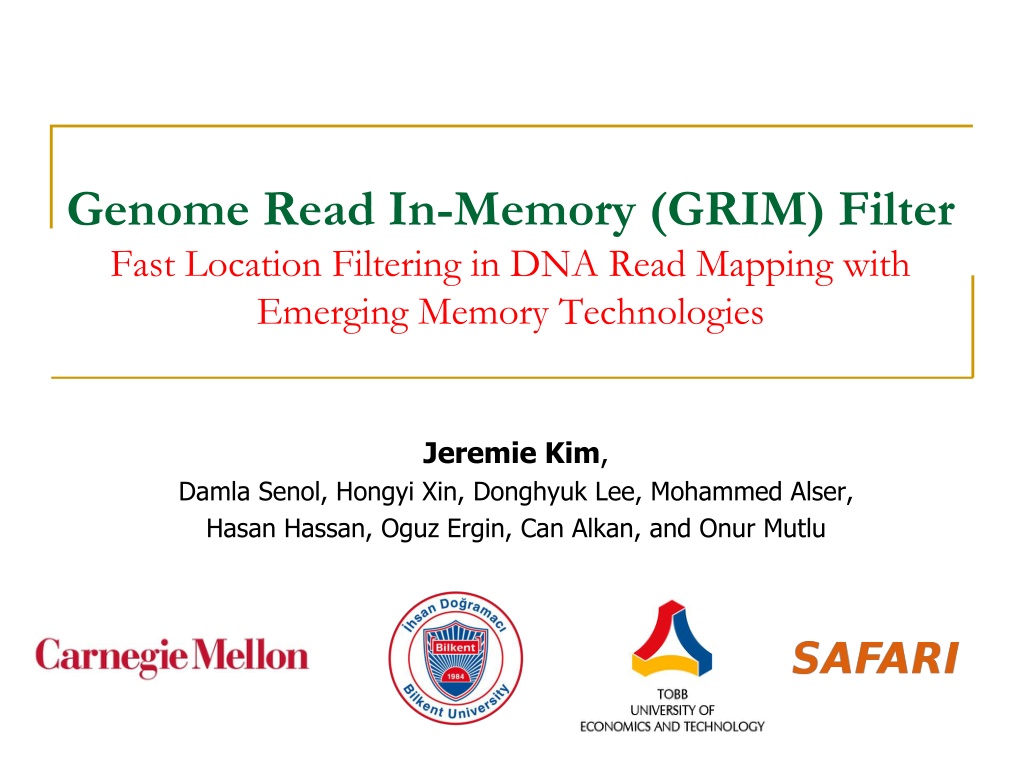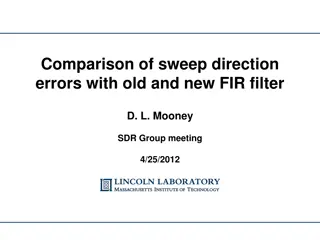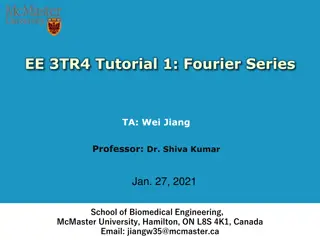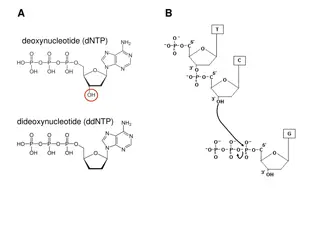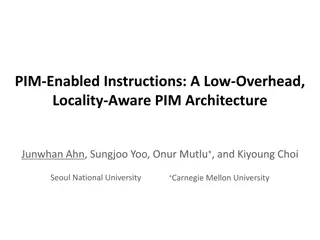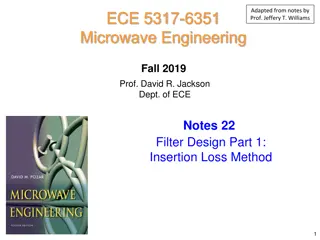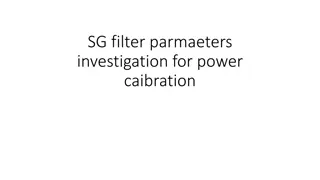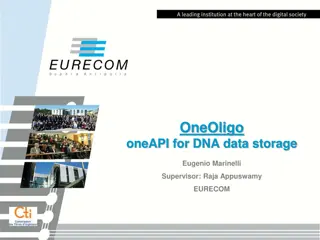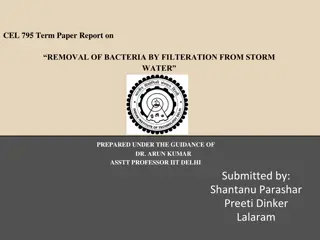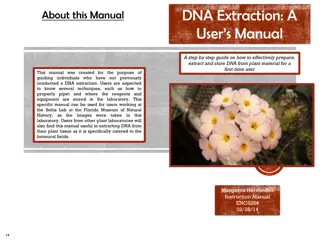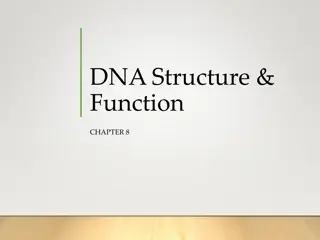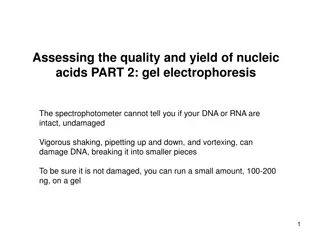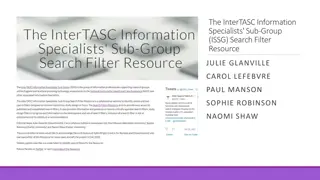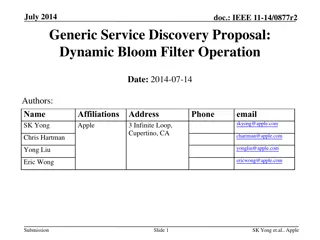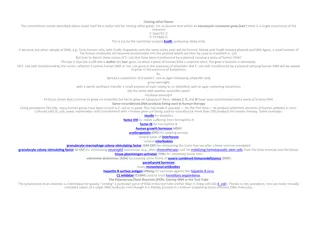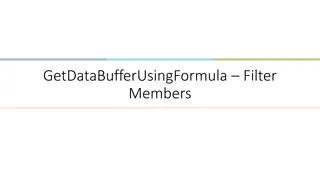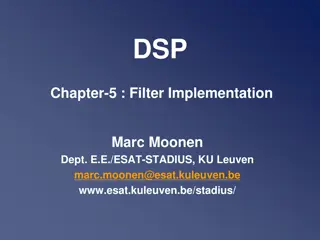Enhancing DNA Read Mapping Efficiency with GRIM Filter & PIM Technology
GRIM Filter, a Processing-in-Memory (PIM) friendly algorithm, aims to accelerate DNA read mapping by improving filtering efficiency. By incorporating an emerging memory technology and innovative ideas such as modifying q-gram string matching, GRIM Filter achieves both speed and accuracy in rejecting incorrect mappings, addressing a critical bottleneck in the process. This solution holds promise for significantly enhancing performance in high-throughput genome analysis.
Download Presentation

Please find below an Image/Link to download the presentation.
The content on the website is provided AS IS for your information and personal use only. It may not be sold, licensed, or shared on other websites without obtaining consent from the author. Download presentation by click this link. If you encounter any issues during the download, it is possible that the publisher has removed the file from their server.
E N D
Presentation Transcript
Genome Read In-Memory (GRIM) Filter Fast Location Filtering in DNA Read Mapping with Emerging Memory Technologies Jeremie Kim, Damla Senol, Hongyi Xin, Donghyuk Lee, Mohammed Alser, Hasan Hassan, Oguz Ergin, Can Alkan, and Onur Mutlu
Introduction 3D-stacked Memory: an emerging technology Processing-in-Memory (PIM) allows embedding customized logic Enables high bandwidth Read mapping can utilize this technology to gain major performance improvements because it is: Compute intensive Memory intensive Goal: We propose an implementation of read mapping using Processing-in-Memory (PIM) for acceleration 2
Hash Table Based Read Mappers Our work focuses on hash table based read mappers The filtering step in read mappers is now the bottleneck Mappers align billions of reads, most incorrect mappings Filter Purpose: quickly rejects incorrect mappings before alignment to reduces costly edit distance calculations Costly because: they are compute and memory intensive Called for every candidate mapping location Filtering each location requires nontrivial compute / multiple memory accesses How can we alleviate the bottleneck? 3
Problem Filters are generally either fast or accurate, i.e. FastHASH [Xin+, BMC Genomics 2013] Fast but inaccurate under high error tolerance settings Q-Gram [Rasmussen+, Journal of Computational Biology 2006] Slow but accurate We Propose: GRIM-Filter Faster than FastHASH with the accuracy of q-gram Accomplished this by employing an emerging memory technology 4
Key Ideas GRIM-Filter, a PIM-friendly filtering algorithm that is both fast and accurate. GRIM-Filter is built upon two key ideas 1. Modify q-gram string matching Enables concurrent checking for multiple locations 2. Utilize a 3D-stacked DRAM architecture Alleviates memory bandwidth issue Parallelizes most of the filter 5
Key Idea 1 Q-gram Modification Modify q-gram string matching for concurrently checking for multiple locations. Reference Genome Read 6
Key Idea 2 Utilize 3D-stacked Memory 3D-stacked DRAM architecture is extremely high bandwidth and can parallelize most of the filter Embed GRIM-Filter into DRAM logic layer and appropriately distribute bitvectors throughout memory Memory Layers TSVs http://images.anandtech.com/doci/9266/HBMCar_678x452.jpg Logic Layer http://i1-news.softpedia-static.com/images/news2/Micron-and-Samsung-Join-Force-to-Create-Next-Gen-Hybrid-Memory-2.png 7
Q-gram Modified in 3D stacked DRAM 3D-Memory Layout We employ both key ideas to implement the following figure to modify q-gram filtering in order to make it more amenable for processing-in-memory 1. In-memory Processing 2. High Bandwidth 3D-Stacked Memory technologies enable: Memory Array Customized Logic DRAM layers Lo Bucket Existence Bitvector Row 0: AAAA Bank Accumulator Comparator Row 1: AAAC Bitvector N Bitvector 0 Bitvector 1 Bitvector 2 TSV Row 2: AAAG Inc. Row N: TTTT Logic layer Row Buffer Row Buffer Vault 8 Akin, Berkin, Franz Franchetti, and James C. Hoe. "Data reorganization in memory using 3d-stacked dram." Computer Architecture (ISCA), 2015 ACM/IEEE 42nd Annual International Symposium on. IEEE, 2015. 11
Key Results 2.08x average performance benefit on real data sets Time (x1000 seconds) False Negative Rates (%) 5.97x reduction in False Negative Rate on real data sets 9
Conclusions We propose an in memory filter that can drastically speed up read mapping Compared to the previous best filter We observed 1.81x-3.65x speedup We observed 5.59x-6.41x fewer false negatives GRIM-Filter is a universal filter that can be applied to any read mapper 10
Thank You! Poster #118 11
Genome Read In-Memory (GRIM) Filter Fast Location Filtering in DNA Read Mapping with Emerging Memory Technologies Jeremie Kim, Damla Senol, Hongyi Xin, Donghyuk Lee, Mohammed Alser, Hasan Hassan, Oguz Ergin, Can Alkan, and Onur Mutlu
